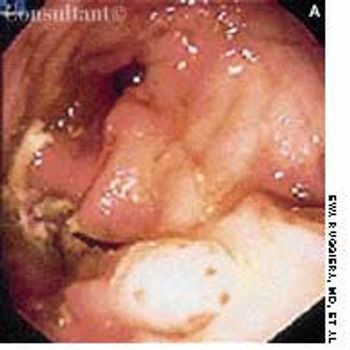
An 80-year-old woman presented with recurrent abdominal pain for 1 month, constipation, and vomiting. She had no diarrhea, rectal bleeding, or weight loss.

An 80-year-old woman presented with recurrent abdominal pain for 1 month, constipation, and vomiting. She had no diarrhea, rectal bleeding, or weight loss.
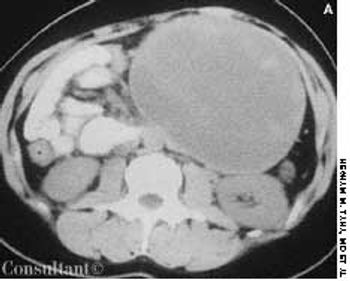
A 24-year-old woman was concerned about a protruding epigastrium mass that had grown since it was first noted 4 months earlier. She had no abdominal pain, nausea, or vomiting.
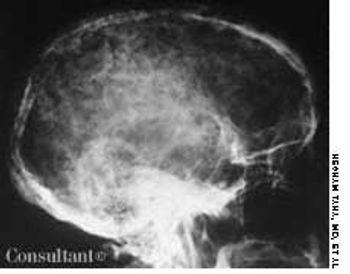
A 28-year-old woman reported that she was in good health before experiencing generalized weakness; exhaustion; and pain in her legs, shoulders, and back for the past 3 months. She also complained of shortness of breath with minimal activity, irregular menstrual periods, and occasional episodes of nose and gum bleeding.
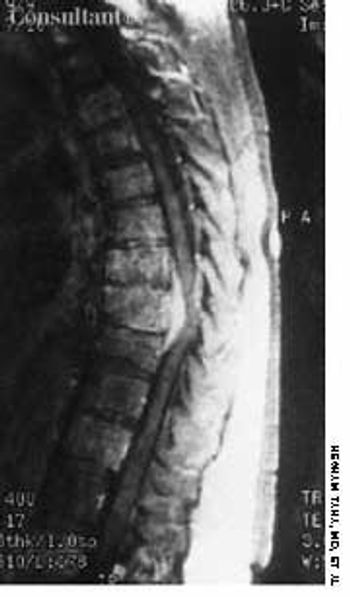
Back pain and weakness of both legs had bothered this 60-year-old woman for 1 week. Left breast cancer, stage 2, had been diagnosed 2 years before, and subsequently she underwent a lumpectomy followed by chemotherapy and radiation therapy.
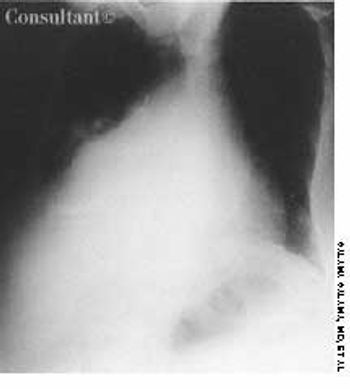
An 82-year-old woman was admitted to the hospital with severe dilated cardiomyopathy. The condition was alcohol-induced and had been diagnosed about 12 years earlier. The patient was taking angiotensin-converting enzyme inhibitors and diuretics.
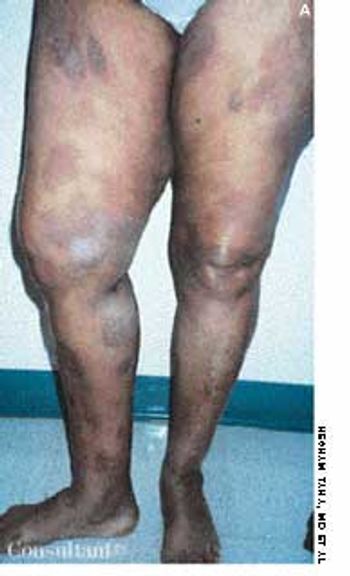
A 55-year-old woman with no significant medical history reported that diffuse erythematous, patchy, purpuric skin lesions over most of her body had been present for the past year. Applications of an over-the-counter corticosteroid cream helped control the pruritus but did not clear the skin lesions.
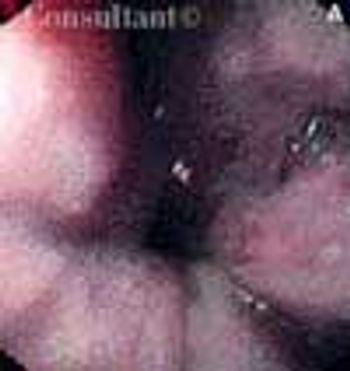
A 66-year-old man presented to the emergency department complaining of vomiting “coffee ground” emesis for 3 days. His history revealed chronic alcoholism for the last 30 years.
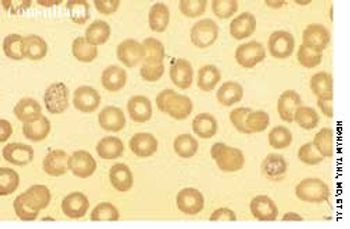
A 20-year-old woman, who had been confused and delirious for 2 days, was brought to the emergency department (ED). She had no significant past medical history and was taking no medication but had recently returned from a trip to Southeast Asia. In the ED, the patient had several convulsions and rapidly became comatose. She was unresponsive; her temperature was 37.9°C (100.3°F), and her blood pressure measured 80/50 mm Hg. The neurologic examination showed no signs of meningeal irritation. Cranial nerve examination was normal and showed mild, bilateral, symmetric increase in deep tendon reflexes. All other physical examination findings were normal.
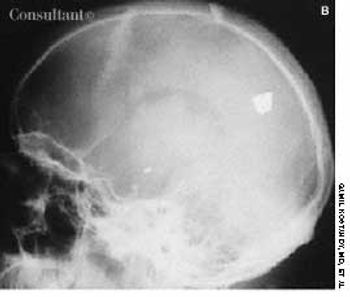
While evaluating this 26-year-old man for suspected sinusitis, skull films revealed the fragments of a 32-caliber gunshot embedded in his brain. The anteroposterior and lateral radiographs show three metallic bullet fragments; the largest remnant is on the left side of the occipitoparietal region. The patient reported being shot at age 11 but denied any residual neurologic signs.
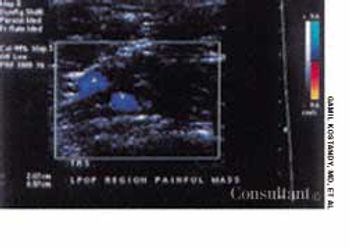
A 47-year-old woman complained of pain and swelling of the right knee of 3 days' duration. Positive fullness of the popliteal area with no pulsations was discerned. Doppler ultrasound showed a 2.5 cm × 1.5 cm cystic structure in the right popliteal region; this confirmed the diagnosis of a Baker's cyst.
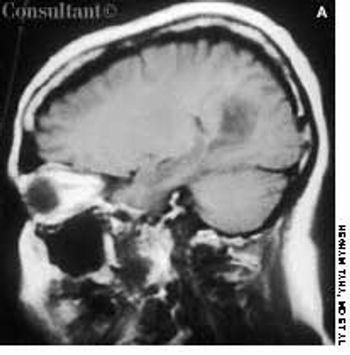
Headache and vomiting suddenly developed in a 41-year-old woman who was 16 weeks pregnant. The next day, she suffered an episode of tonic-clonic seizures associated with a 15-minute loss of consciousness.
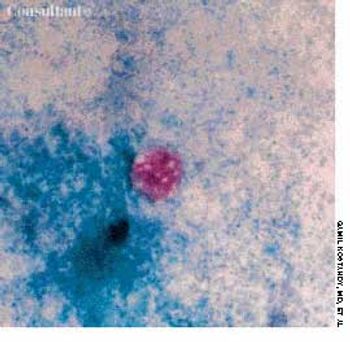
A 32-year-old Hispanic woman with AIDS presented with a 1-month history of diarrhea; abdominal bloating and cramps; loss of appetite; and pronounced fatigue, malaise, and weight loss. She had no fever or chills and was not vomiting. Her CD4+ cell count was 12/µL. Results of a routine microscopic examination of stool for ova and parasites were negative; an acid-fast stain of stool demonstrated oocytes of Cyclospora cayetanensis measuring 8.8 mm in diameter (pictured, magnification ×1,000). This is about twice the size of the Cryptosporidium parvum oocyte, which typically is 4 to 5 mm.
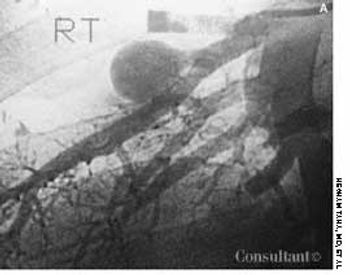
A 22-year-old man complained of progressive shortness of breath and abdominal distention. Three years before, he had completed chemotherapy for Hodgkin's disease and had since been in remission. Recently, he had been treated for tonsillitis with oral antibiotics.
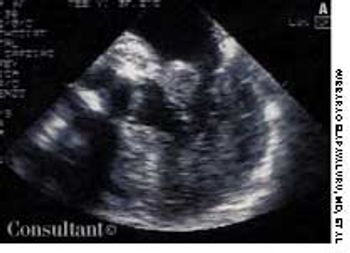
A 75-year-old woman with a bioprosthetic aortic valve, who had undergone surgical repair of an aortic root aneurysm 9 months earlier was hospitalized with fever, headache, and altered mental status of 1-day's duration.

A 40-year-old woman was concerned about an area of redness and tenderness on her left breast. Despite antibiotic therapy prescribed by another physician, the rash had progressed during the past month to erythema and nodules that involved the anterior chest and right breast.
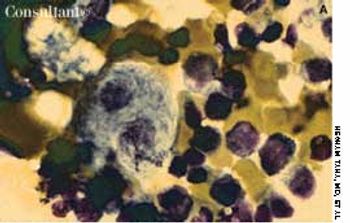
A 65-year-old man with no significant medical history presented with mild abdominal pain-primarily in the left lower quadrant-and bleeding gums. He had a petechial rash over the entire body and hepatosplenomegaly 10 cm below the costal margin.
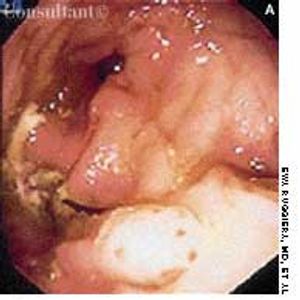
Published: September 14th 2005 | Updated:
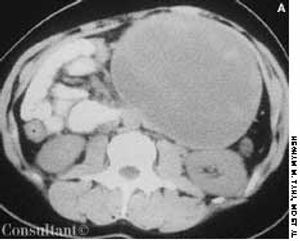
Published: September 14th 2005 | Updated:
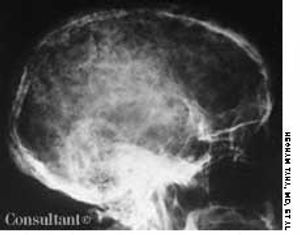
Published: September 14th 2005 | Updated:
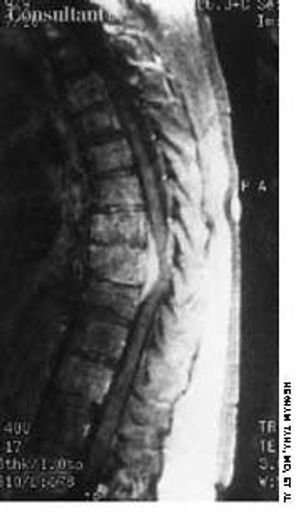
Published: September 14th 2005 | Updated:
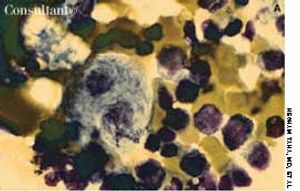
Published: August 1st 2000 | Updated:
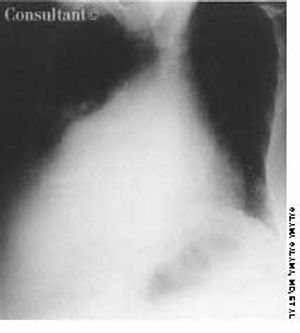
Published: September 14th 2005 | Updated: